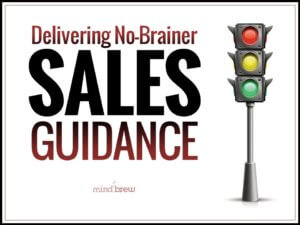An often-cited study from McKinsey showed that one of the key areas that separates the leading sales organizations from the rest of the pack is their ability to find growth before their competitors do.
It just makes sense, right? When you’re actually out there looking for areas of market growth, the early bird is going to get the worm.
But what about established B2B companies that aren’t in those sexy growth markets? Companies that can’t rely on radical new product categories and customer acquisition?
That’s one of the things that our our research team has been digging into recently—finding the common threads between successful sales organizations in established B2B companies. More specifically, how these companies are able to drive revenue and profit growth—even when their competitors aren’t. And based on our discussions with dozens of companies, it’s clear that leading sales organizations share a common focus in 3 key areas:
- They look for customers that can buy more.You can’t be content getting the same orders from customers, quarter after quarter. Nor can you simply rely on your customers seeing growth in their own business and buying more from you in-turn. Leading sales organizations are deliberate driving cross-sells and up-sells. Not only do they train their teams on how to spot these opportunities, but more and more are leveraging Big Data to help them out.
- They keep more customers buying.It’s often not wholesale defection that hurts the most…it’s death by 1000 line-item cuts that really gets you. Maybe your customer is still doing business with you, but they’ve quietly started buying certain products from your competitor instead. Our research shows that leading sales organizations aren’t just focused on retaining customers—they’re focused on ensuring that customers are maintaining (or growing) their level of business.
- They find customers that can pay more.Chances are, you’ve heard the adage that a 1% increase in price can increase average operating profits by as much as 11%. Leading sales organizations are often very deliberate in the area of pricing—often with efforts centered around price segmentation, price improvement and capturing value. Working in concert, these efforts can allow them to know which customers can pay more, how much those customers should be willing to pay, and what their sales teams can be doing to sell the value and capture the price.
The best part? These are all strategies that can deliver top- and bottom-line growth from the customers you’re already selling to today. None of these efforts require that you open up new markets or develop new products. They can be very effective ways to stay ahead of your competitors—or start catching-up if you suspect they’re already besting you.











